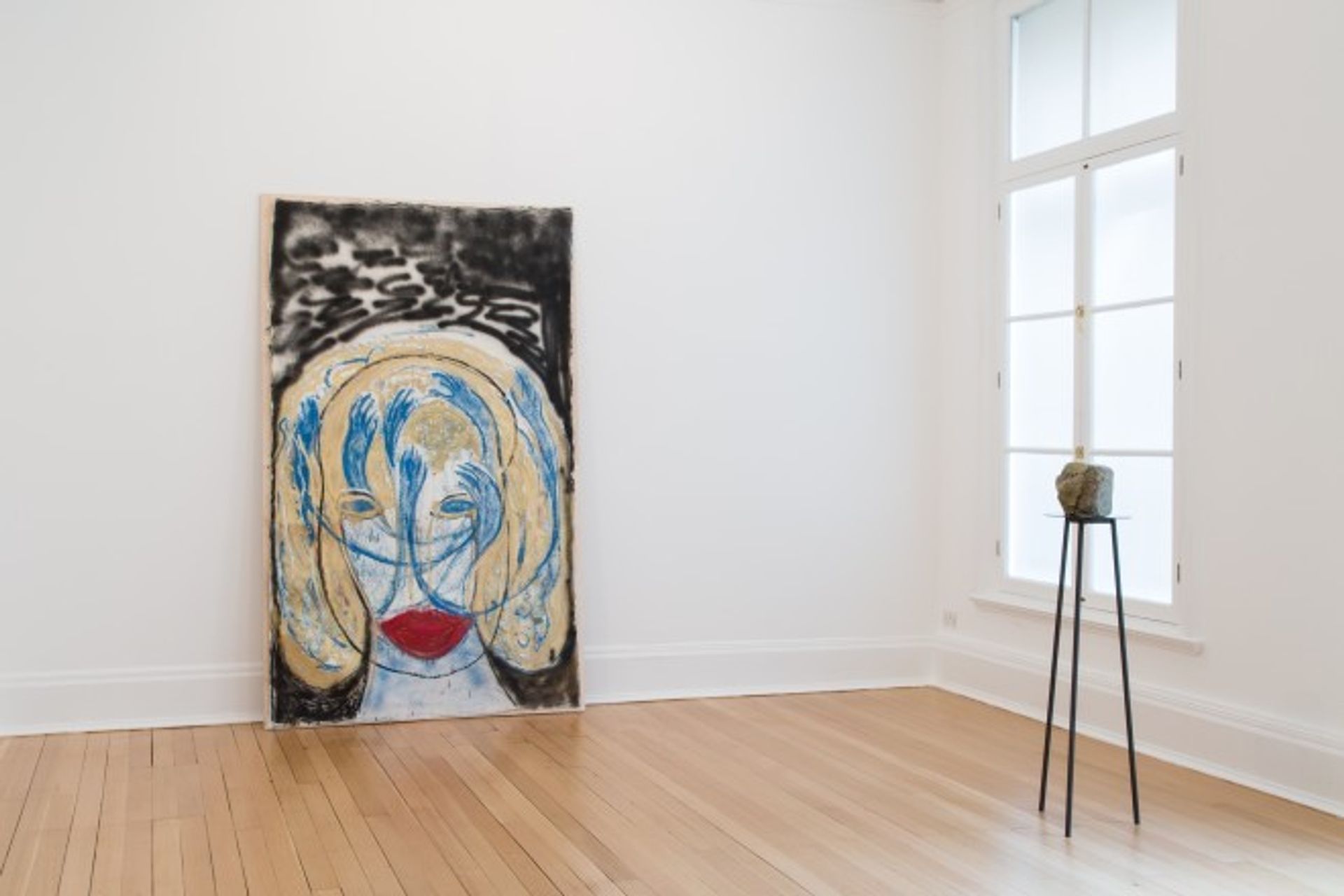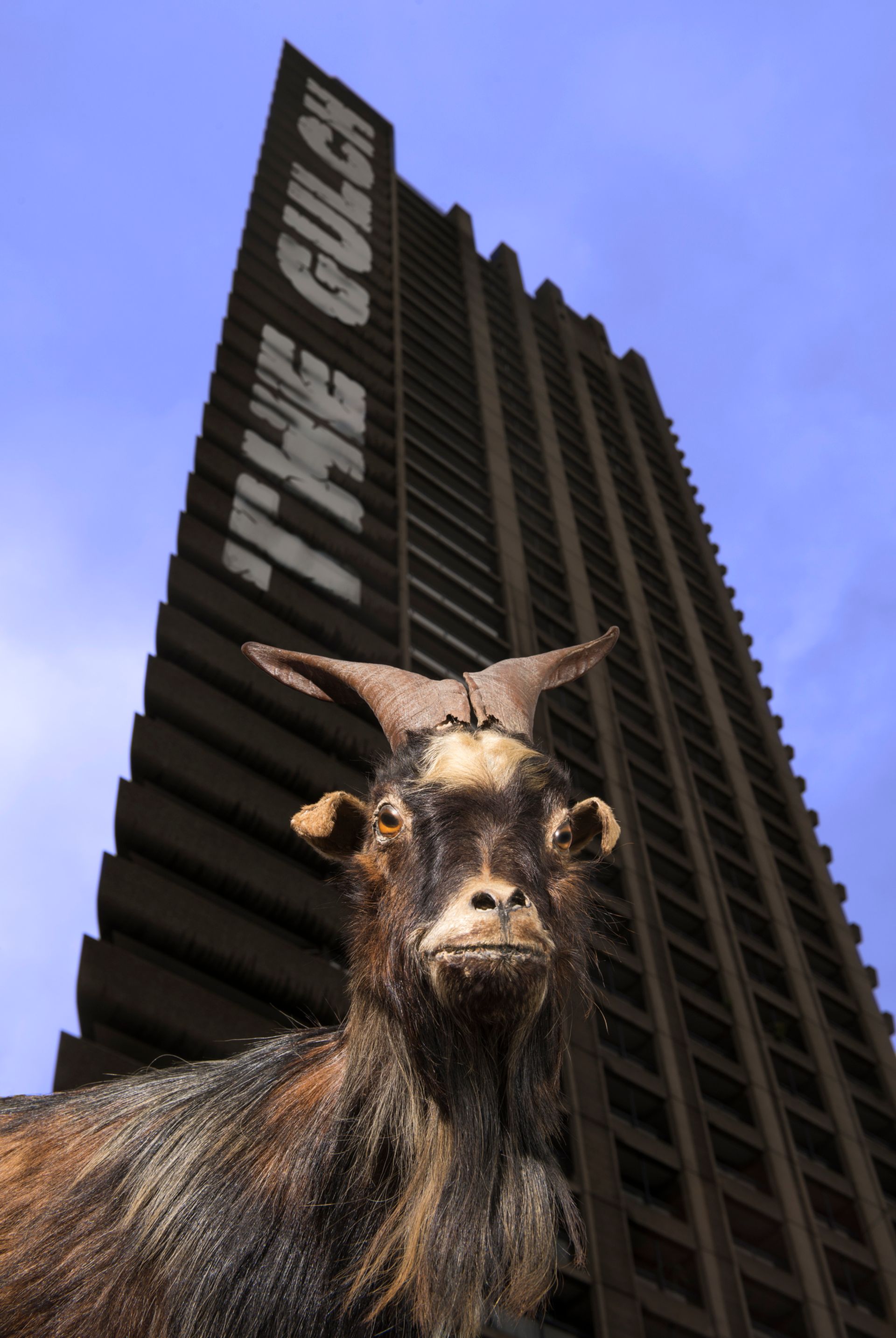The Infinite Mix: Contemporary Sound and Image, Hayward off-site at The Store (until 4 December)
The Hayward may be in the throes of a major refurbishment but it is popping up with a vengeance just across the river with this outstanding exhibition devoted to the most recent artistic combinations of sound and moving image. The show is held in a gutted office block owned by The Vinyl Factory, who have stumped up to provide the optimum conditions to view each of these ten top-notch and multifarious works. My highlights are Kahlil Joseph’s two screen portrait of the people of Compton, LA, set to a specially edited Kendrick Lamar soundtrack and featuring the singer’s family home videos; and also Ugo Rondinone’s kaleidoscopic black-and-white renditions of legendary beat poet and Warhol factory member John Giorno performing his poem THANX 4 NOTHING.
Then there’s a hologram of Dominique Gonzales-Foerster dressed up as Maria Callas and lip synching her arias. While a different power of performance comes through Jeremy Deller and Cecilia Bengolea’s fact-fantasy celebration of the Japanese dancehall obsessive Bom Bom, as she takes her pneumatic, acrobatic skills to Jamaica, wins a fan and gets eaten by a giant CGI iguana. Also down in the underground car park don’t miss Cyprien Gaillard’s 3D Nightlife which loops from a Nazi-era stadium to the rustling ghostly branches of Jesse Owens’s oak tree, presented to the runner at the 1936 Olympics and now growing outside his former high school in Cleveland, Ohio. All of this unfolds to a repeated, distorted wailing loop of Alton Ellis dub reggae chorus, “I was born a loser.” Sound and vision, indeed.

Marisa Merz, Thomas Dane (until 12 November)
Marisa Merz was the only female artist to be actively involved in Arte Povera, and is a formidable artist in her own right. But, as is so often the way, she has been overshadowed by her more famous husband, Mario. Erroneously so, as this small but stunning show confirms. Now in her 90s, based in Turin and still working full throttle, Merz continues to demonstrate a profound preoccupation with the human form and a vigorous engagement with the physical qualities of her wide range of materials. These include clay, iron, several forms of paint, wax, graphite and gold. In both her choice of media and her subject matter Merz overtly refers to Western art-historical traditions. But these expressive, mysterious works are also utterly and intensely her own, whether a simple votive-like female torso in unfired clay or the dramatic giant red, silver, blue and gold angel, painted on a giant sheet of paper and enveloped in flowing hair and soaring wings. Swirling blue hands swoop around another giant female head, whose mask-like Byzantine impassivity is incongruously at odds with smoky, surrounding scribbles of black spray paint and her voluptuous pair of giant red lips.
Jim Nutt, Cabinet (until 17 December)
It is especially apt that Cabinet has chosen to inaugurate its unusual, meticulously designed newly built space with the enigmatic, obsessively wrought and decidedly peculiar paintings of Jim Nutt. There’s an oblique conceptual correspondence with the gallery’s squat, strange but also dynamic building with its rich range of textures, oddly angled walls, artist-designed trapezoid windows and ceramic balconies all wrapped in a carapace of richly sombre handmade bricks, and the veteran Chicago painter’s immaculate off-kilter acrylic portraits of the same peculiar woman with her monumental and oddly coloured-in nose. Both are richly referential: whether the building’s architectural fusion of Arts and Crafts and visionary expressionism or Nutt’s beguiling blend of enamelled, impassive early-Flemish portraiture and the curvaceous cubism of Juan Gris, spiced up with a soupcon of cartoonish caricature. An intriguing and appropriate start for a gallery, which has always made an almost perverse point of not conforming to art market mores.
Bedwyr Williams: the Gulch, The Curve, Barbican (until 8 January 2017)

Bedwyr Williams has risen to the challenge of the curve with his characteristic combination of bonkers humour and bizarre imaginings. Entry is through a pair of ominous crags onto what seems to be a moonlit beach where a Welsh folk song emanates from within a solitary trainer, abandoned beside a smouldering campfire. What then unfolds are a series of immersive absurdist scenarios, many of which require active visitor participation. You can have a bash on a drum kit, declaim into empty microphones and even get a stuffed goat perched on a crag to sing your songs. Also on offer is a captivating audio account of how a wooden spoon (displayed in its own vitrine) survived a surreal restaurant conflagration; a trippy film about a depressed self-help hypnotist, which is viewed whilst sitting around a boardroom table; and a running track that extends beneath suspended shelving units and a waving good luck cat. But while the whole experience is funny and fantastical, beneath all the madcap zaniness there’s also a hefty undertow of pathos and a more disquieting sense that at any moment things could spin scarily out of control.


